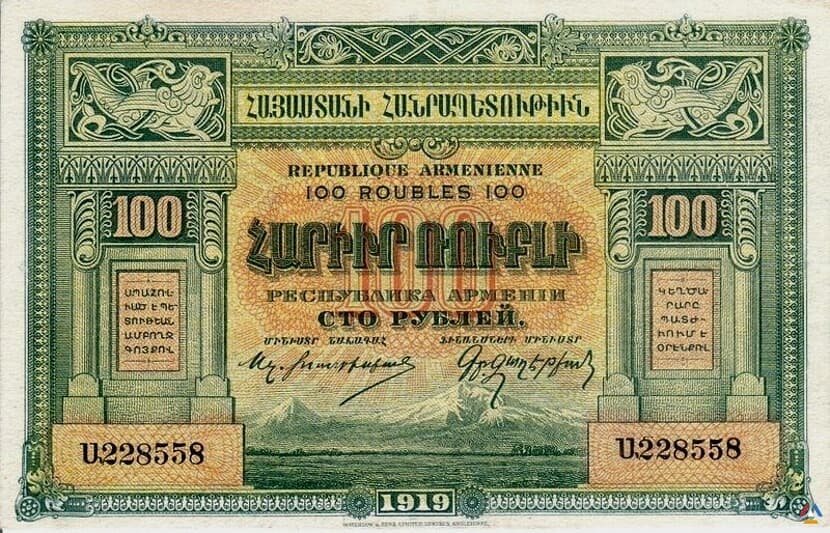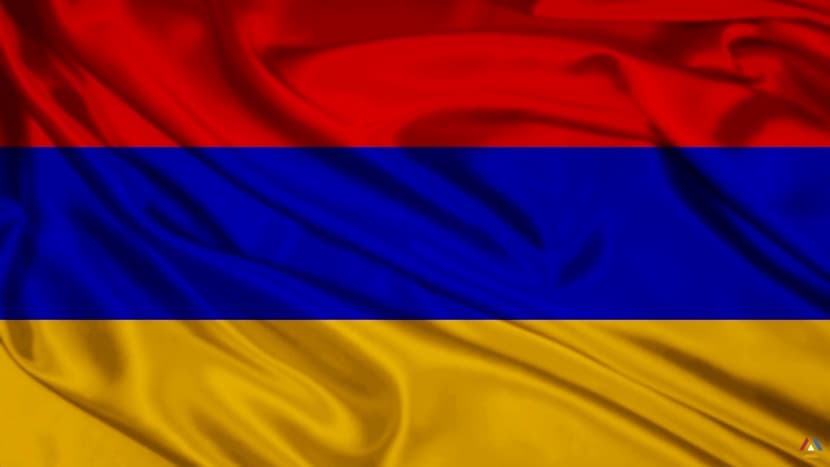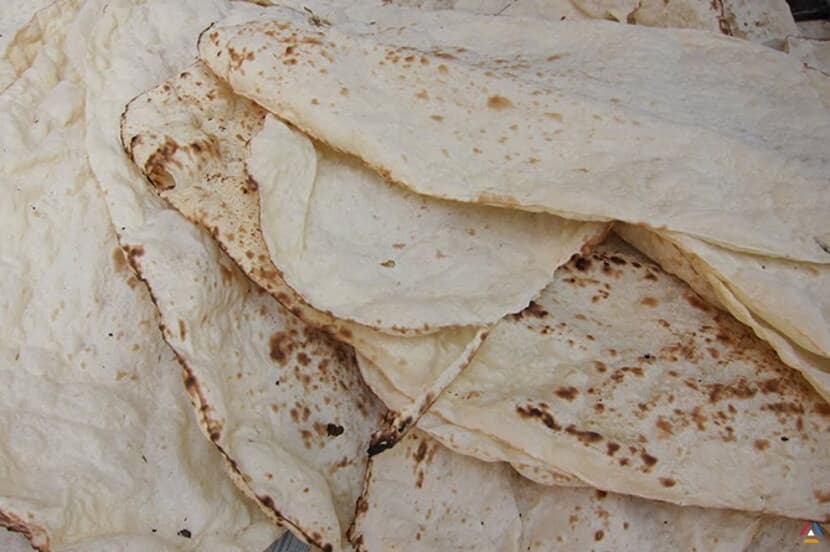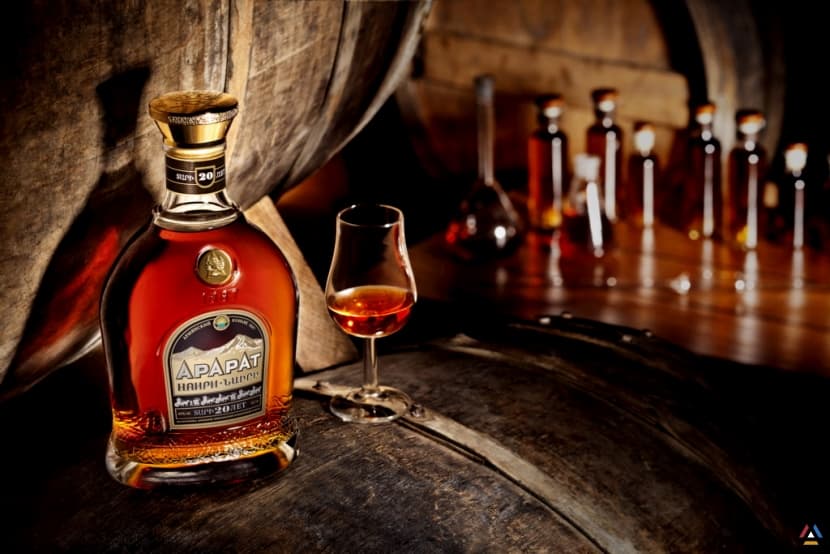
Armenian currency

Every state has its own national currency.The payment of the Republic of Armenia is dram.The Armenian currency in the world community has a digital code 051 and the letter designation AMD. In addition to this, the dram is indicated by the letter “da” of the national alphabet,which isportrayedwith two horizontal lines in the middle.One dram is equal to one hundred lepta.It is noteworthy that “Armenian coins”, although are officially in circulation, but practically are not used, due to their low purchasing power. Coins with a denomination of 500 drams and banknotes denominated from a thousand to one hundred thousand drams are in use.Smaller banknotes and coins are given “for change”.
How did the word “dram” come into use?
The word "dram" is borrowed from the Greek. It is easy to guess that it means “money” in Armenian.For some people, the term is associated with the word "drachma", which is completely true, because the Greek currency had just such a name. It is worth noting that when stable monetary relations appeared (in the 12th century), the ancient Armenians had an idea to call the Armenian currency with the word “ghaik”, and this name was not the only option.Over time, they became more diverse: "stack", "Ibar", "Dahekam". But historically exactly the dram became the national currency of Armenia.
How and when did the first Armenian money appear?

The reign of Tigran the Second Great (1st century BC) was marked by many positive events occurred on the territory of ancient Armenia. At that time it was a rather large and powerful state, inferior in its power only to Rome. It was Tigran the Second Great who significantly increased the territory of his country, and all subsequent rulers failed not only to increase the area of the state, but also to maintain its integrity. The first coins appeared in that period. Tigran the Third introduced new coins, on which the inscription was engraved: "Armenia is returned and defeated." This meant that the Romans conquered the country ...
The currency Armenian dram appeared around 1200, in the Cilician state. All inscriptions on the coins were made in the ancient Armenian language, and on each coin has a profile picture of Levon the First. The Armenian currency of those years, which by that time had already received the name dram, circulated through the territory of Cilicia until the 14th century. Exactly at that time was fall of this state and its conquest by the Mamelukes occurred. For long 5 centuries, the term “Armenian money” disappeared from the word circulation, because it simply did not exist. The return of the Armenian currency, whose name changed into Armenian ruble, occurred only in the 20th century. The banknote design was developed by the artist A. Fetvadzhan, and they were made in London. The Armenian ruble did not “walk” for a long time through the territory of the Erivan, which arose in 1918 and ceased to exist in 1920.
The Soviet and post-Soviet period
Armenia became the Soviet Republic in November 1920. Officially, that status was confirmed in December 1922, when the formation of the USSR. In the period from 1920 to 1993, the Armenian currency did not exist, because the only monetary unit that had the right to be circulated through the territory of the Union Republics was the Soviet ruble and “exchange coins” - pennies. In 1993, Armenia gained independence; in parallel with this, the state Central Bank was opened. Naturally, the question arose about the national currency. The Armenian dram appeared in November 1993. The currency received its historical name after a short debate. The currency received its historical name after a short debate. The first bills were printed in Germany, and they had not very expressive design and faded color.
In order to exchange Soviet rubles for new Armenian money, the citizens of Armenia were given a very limited period-only one week. The rate of the Armenian currency to the ruble at that time was: 1 dram = 200 rubles. To the dollar: 20 dram = 1$. Banknotes made in a “dull” design were in circulation until 1995, until the Central Bank of Armenia replaced the issuing company. New banknotes and coins are the result of the joint work of Armenian artists and English designers. Banknotes began to decorate architectural sights and fragments of works of art, as well as images of famous personalities: Armenian poets, scientists, musicians, politicians.
What is now?
Banknotes are mainly involved in the money turnover. Coins represent value for collectors and tourists. They are made of different materials (depending on the face value), although silver was used for that in ancient times. During the formation of the national monetary system, it was planned to mint iron coins, but subsequently, that idea was abandoned. Now the 10-dram coin is made of aluminum, the 20-dram coin is made of copper-coated steel, the 200-dram coin is made of brass. 500 drams (bimetallic) are the most beautiful and the most difficult coins to produce, with a brass core and a copper-nickel rim. Now the Yerevan Mint is engaged in the manufacturing of coins and banknotes. Earlier, small banknotes of 50, 100 and 500 drams were issued, but they were gradually removed from circulation, replaced with coins.
Exchange rate against other currencies
Going to Armenia, you should know that the dram is the Armenian national currency, the only one of all currencies that allows you to feel confident and comfortable in the country. With its help, you can easily make all calculations in stores, cafes, and entertainment characters. The exchange is recommended only in official exchangers.You can buy Armenian currency at any bank in Armenia. The exchange rate of the Armenian currency to the ruble, to the dollar, to the euro, to the tenge and to all other currencies of the world is not stable. That is, it is a variable quantity that is tended to change. Today, the rate of the Armenian dram to the ruble is 7.47: 1, to the dollar - 476.6: 1.
0
15:15 14-04-2020






 Հայերեն
Հայերեն  Русский
Русский
Dear visitor, if you have a minute please leave your comment about the film or series. Thank you.